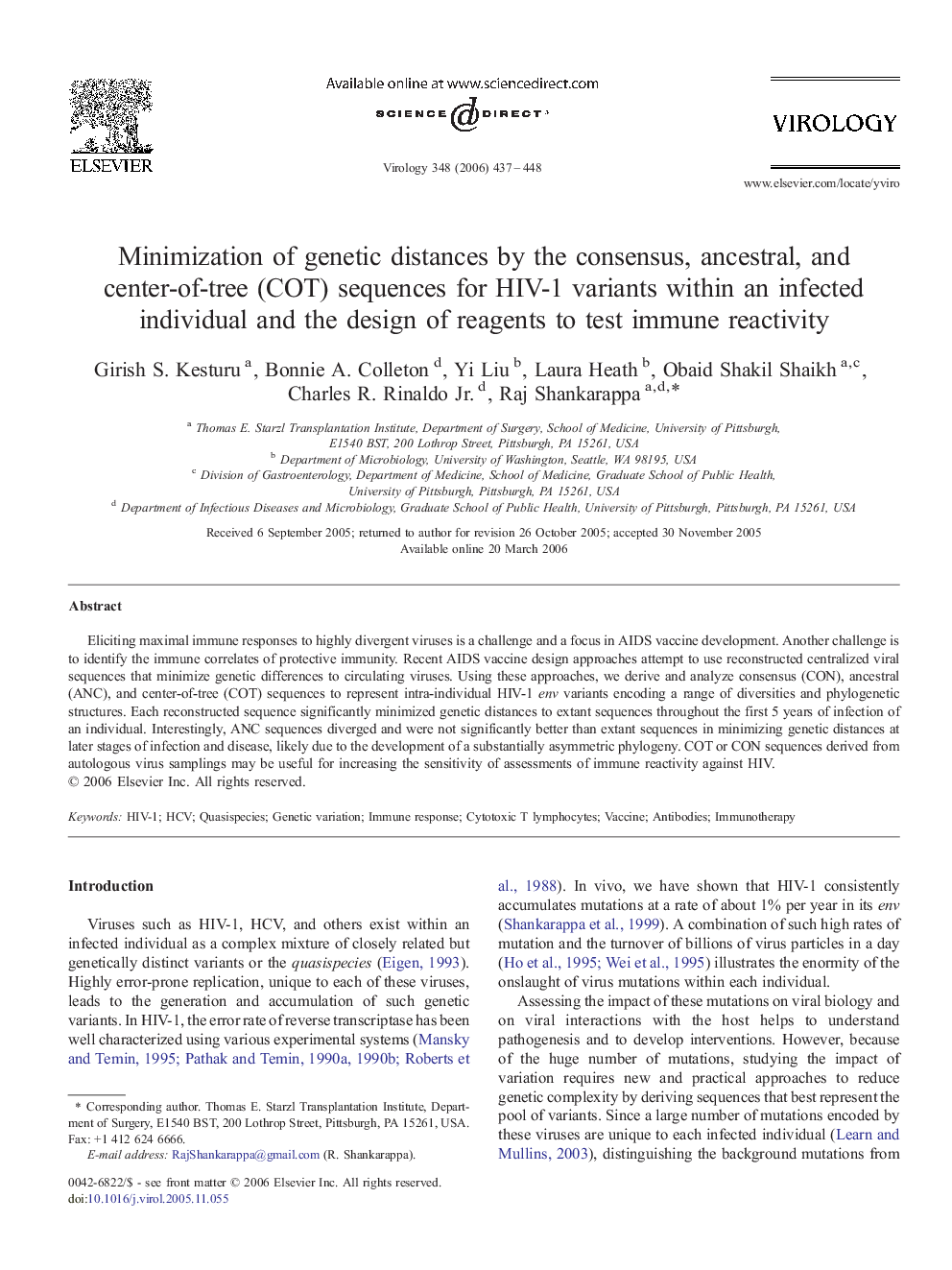| Article ID | Journal | Published Year | Pages | File Type |
|---|---|---|---|---|
| 3427645 | Virology | 2006 | 12 Pages |
Eliciting maximal immune responses to highly divergent viruses is a challenge and a focus in AIDS vaccine development. Another challenge is to identify the immune correlates of protective immunity. Recent AIDS vaccine design approaches attempt to use reconstructed centralized viral sequences that minimize genetic differences to circulating viruses. Using these approaches, we derive and analyze consensus (CON), ancestral (ANC), and center-of-tree (COT) sequences to represent intra-individual HIV-1 env variants encoding a range of diversities and phylogenetic structures. Each reconstructed sequence significantly minimized genetic distances to extant sequences throughout the first 5 years of infection of an individual. Interestingly, ANC sequences diverged and were not significantly better than extant sequences in minimizing genetic distances at later stages of infection and disease, likely due to the development of a substantially asymmetric phylogeny. COT or CON sequences derived from autologous virus samplings may be useful for increasing the sensitivity of assessments of immune reactivity against HIV.
